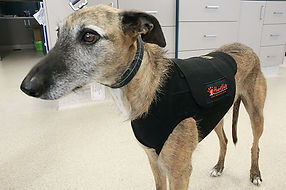Ventricular Premature Contractions
What Makes the Heart Beat?
The heart is made up of four chambers. The two upper chambers are the atria, the two lower chambers are the ventricles. In addition to the upper and lower chambers, the heart also has right and left sides. The atria fill with blood and pass it to the ventricles. The right ventricle pumps poorly oxygenated blood to the lungs. The left ventricle pumps well oxygenated blood to the body (see ‘Normal Cardiac Circulation’).
What Causes the Heart Muscle to Contract?
Heart muscle contracts after it is stimulated by an electrical impulse. This starts within a small area of specialized tissue in the right atrium called the sinus node. The sinus node initiates the electrical impulse, which then spreads rapidly through the muscles of both atria, stimulating them to contract. The electrical impulse pauses briefly in a region of specialised tissue called the atrioventricular node before spreading down to both ventricles to stimulate them to contract. The electrical activity of the heart can be recorded on an electrocardiogram (ECG).
What is a Ventricular Premature Contraction?
A ventricular premature contraction (VPC or PVC) is a beat that originates from the ventricles (the lower chambers of the heart) rather than from the sinus node in the right atrium. These beats interrupt the normal (sinus) rhythm and result in an irregular sounding heart rate. The result on the ECG is a wide and bizarre looking waveform. Single VPCs are not life threatening but may indicate underlying disease (in the heart or elsewhere in the body). If many VPCs occur in a row (ventricular tachycardia), this can be life threatening and may require immediate treatment.



What Causes Ventricular Premature Contractions?
There are many causes of VPCS. Most concerning are cardiac diseases such as Dilated Cardiomyopathy, Myxomatous Mitral Valve Degeneration or Cardiac Tumours. VPCs can also occur secondary to conditions unrelated to the heart such as abdominal disease, systemic disease and pain. VPC’s can occasionally occur without any evidence of an underlying cause.
In the Boxer breed, VPCS most commonly occur due to a genetic (inherited) abnormality. This disease is called Arrhythmogenic Right Ventricular Cardiomyopathy (ARVC) and was previously known as ‘Boxer Cardiomyopathy’. This disease is characterised by replacement of the right ventricular muscle with fat and fibrous tissue. This causes ventricular arrhythmias, often with a normal looking heart on echocardiogram (cardiac ultrasound). The arrhythmia can be severe enough in Boxers to cause collapse and, occasionally sudden death. As it is an inherited disease, breeding from an affected Boxer is not recommended.
How Are Ventricular Premature Contractions Diagnosed?
Most commonly, your regular veterinarian will hear an irregular heart rhythm at your pet’s yearly check up. Occasionally, if severe, the first sign of a problem may be an episode of collapse. If either if these occur, the first step is an electrocardiogram (ECG) to assess the heart rhythm. If the ECG confirms VPCs, there are then several additional tests that will be recommended in order to look for a potential cause:
-
Echocardiogram: Following an ECG confirmation of VPCs, the first test usually recommended is an echocardiogram (heart ultrasound). This is to look for evidence of structural cardiac disease as the cause of the arrhythmia
-
Blood work: Blood work is also highly recommended to screen for non-cardiac causes of VPCs.
-
Holter monitor: A 24 hr Holter monitor (24 hr ECG) may be recommended in order to determine if your dogs VPCs requires treatment or, in dogs on treatment, to assess if the response is adequate.
-
Additional tests: If there is no evidence of cardiac disease, additional tests that may be recommended include chest xrays and an abdominal ultrasound to look for non-cardiac causes of VPCs.


Holter monitor
How Are Ventricular Premature Contractions Treated?
The treatment for VPCs depends on the underlying cause and severity. Single VPCs usually do not require treatment. However, if more severe arrhythmia is present, medication with Sotalol, Mexiletine or Atenolol may be recommended. If your dog presents with sustained ventricular tachycardia (continuous VPCs with no normal beats), immediate treatment with an intravenous drug called Lignocaine is recommended. VPCs secondary to systemic disease usually do not require treatment and these resolve on treatment of the underlying disease process.
